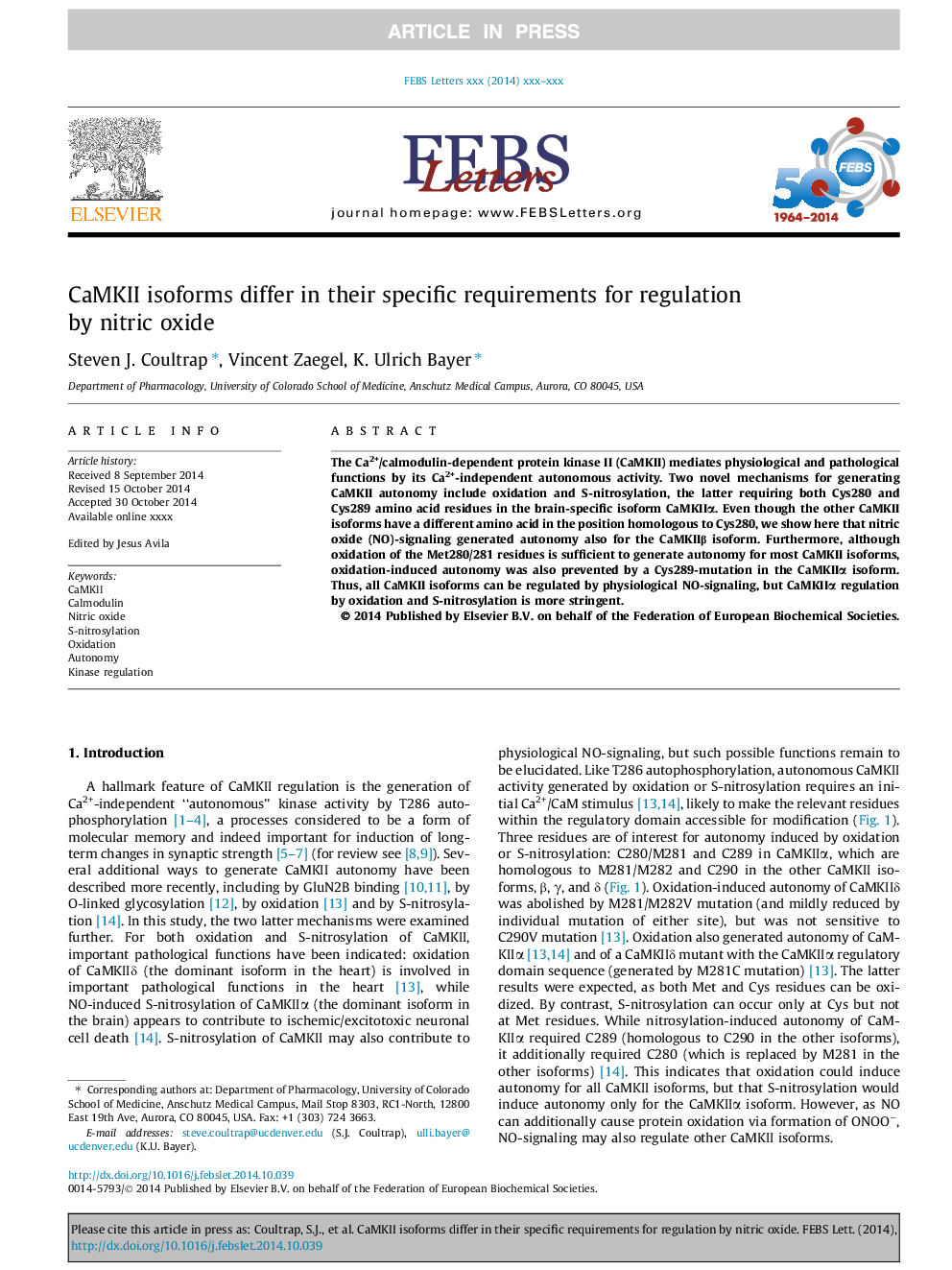| Article ID | Journal | Published Year | Pages | File Type |
|---|---|---|---|---|
| 10870031 | FEBS Letters | 2014 | 5 Pages |
Abstract
The Ca2+/calmodulin-dependent protein kinase II (CaMKII) mediates physiological and pathological functions by its Ca2+-independent autonomous activity. Two novel mechanisms for generating CaMKII autonomy include oxidation and S-nitrosylation, the latter requiring both Cys280 and Cys289 amino acid residues in the brain-specific isoform CaMKIIα. Even though the other CaMKII isoforms have a different amino acid in the position homologous to Cys280, we show here that nitric oxide (NO)-signaling generated autonomy also for the CaMKIIβ isoform. Furthermore, although oxidation of the Met280/281 residues is sufficient to generate autonomy for most CaMKII isoforms, oxidation-induced autonomy was also prevented by a Cys289-mutation in the CaMKIIα isoform. Thus, all CaMKII isoforms can be regulated by physiological NO-signaling, but CaMKIIα regulation by oxidation and S-nitrosylation is more stringent.
Related Topics
Life Sciences
Agricultural and Biological Sciences
Plant Science
Authors
Steven J. Coultrap, Vincent Zaegel, K. Ulrich Bayer,
